Introduction to Turkish Cheese
Turkish Cheese – The history of cheese probably goes as far back as that of milk. Cheese holds a special place not only in Turkish cuisines, but also in the cuisines of the world. According to many views, cheese originated in Mesopotamia, in other words in some parts of Anatolia. The type of cheese is determined by the production stage. Factors such as the quality of the milk used, the protein and fat content, the amount of bacteria that it contains, the conditions of the factory, temperature and humidity levels, the quality and the production techniques used for the additives influence the variety and the taste of cheese.
Turkish Cheese is a critical part of the Turkish cuisine. People begin eating cheese early in the morning over breakfast, where typically anywhere between 1-3 types of cheeses are consumed. Lunch is often a heartier meal where cheese is more likely to be part of a dish itself, such as a grilled cheese sandwich with Kaşar cheese, and dinner often turns onto other dishes with cheese mixed in or grated on top.
But while this much is also generally true of Europe, what separates Turkey from its European counterparts is not just the variety of cheeses, but the flavors and types. The base for Turkish cheese is white cheese, of which there are countless varieties and ways to make it. In English, we tend to refer to all of these cheese at feta cheeses and foreign palates are unused to tasting the variety of flavors. Overall, there are more than 100 types of cheese produced in Turkey, however, when grouped according to their similarities, there are around 30 different kinds of cheese.
This, of course, makes tasting them all so much more fun – so let’s give you a sense of the kinds of cheeses available in Turkey. Dig in!
Short History of Turkish Cheese
This is reflected in the 11th-century Turkish dictionary, Divanu Lugat-it-Turk, written by Mahmut of Kasgar between 1072 and 1074, in which he cites the words udma and udhitma for fresh cheese, and translates the Turkish sentence Ol udhitma uditti as he made cheese. The verb “udhitmak” originated from Uighur Turkish and meant to put to sleep, to make solid or to leaven, so etymology reveals the delightful idea of milk solidified into fresh one being ‘sleeping milk’.
The modern Turkish word for cheese: “peynir” first occurs in the Book of Dede Korkut, a collection of orally transmitted legends which were first written down in the 12th and 13th centuries. Evidently, this word first entered the Turkish language following the migration from Central Asia. The Turkmen tribes knew how to make several different varieties of peynir and must have adopted this new term for them on their way westwards through Iran or after their arrival in Anatolia. Anatolia already had its own style and varieties originating in antiquity. Writing about the northwestern region today encompassing Bolu, Izmit, and Iznik, the famous historian Strabo says, In the interior of Bithynia above Tieion is Salona, where alone are the finest pastures for cattle and where Salonites is made. In his history of the Ottoman dynasty, Asikpasazade (1400 – 1484) writes that Osman Gazi gave gifts of peynir, dried yogurt, fat and clotted cream to the Byzantine rulers of Bilecik in return for protecting the property left behind in their winter settlements by the Ottoman tribes in their seasonal migrations to the summer pastures with their herds.
The Code of Law issued in 1502 by Beyazit II gives the names of peynir from all over the Ottoman Empire which were sold in the markets of Istanbul: fresh lor, kaba lor, fresh dil, fresh cayir, Mudurnu, Sumnu, Karaman, Sofia, Esme, Midilli (Mytilene), teleme, brine (white or feta), Limni (Limnos) tulum ( made in a goatskin bag), Izmit tulum, Rumelia tulum, fresh kaskaval and Balkan kaskaval. Today there is a general misconception among Turkish urban dwellers that Turkey does not possess a wide range of cheeses. This is because few regional kinds of peynir find their way into city shops. In fact, there are a great many varieties, many little are known outside the area where they are made, a finding which is not surprising in a land which has been home to many civilizations over thousands of years.
Regulations and Methodology
According to the Turkish Food Regulation, cheese is “a dairy product with particular taste, aroma and consistency, produced by coagulating raw milk, UHT milk or milk cooked at 72 degrees for two minutes with cheese yeast or a harmless acid, and leaving to maturation for a particular period.” In order for milk to turn into cheese, first it needs to coagulate and there are mainly two methods used to achieve this. The first involves leaving milk as it is; in which case it will go sour and coagulate. The second method involves adding yeast to milk, and leaving it to coagulate. As a result of this coagulation, the liquid called “whey” is released. The fresh cheese produced through this process is called “teleme.” The Teleme is left to maturate for particular durations, and through various methods it then becomes ready to be consumed as cheese. Turkish culinary culture features about 20 cheese varieties in about five groups; kasar, tulum, mihaliç, lor, and the white cheese group which is the most important.
Turkish Artisanal Cheeses
Turkish cheese is one of the most delectable delights of Turkish cuisine, and is a breakfast and meze staple that is also featured in a number of unique desserts. However, the vast variety of cheeses this country has to offer goes way beyond the types anyone residing or traveling to Turkey would normally encounter.It should come as no surprise that in this land, which has been home to many civilizations, boasts such a diverse range of cheese offerings. We know that in 3000 B.C., the Sumerians, who were the earliest settlers of Mesopotamia, recorded the making of 20 different types of cheese on clay tablets. Overall, there are more than 100 types of cheese produced in Turkey, however, when grouped according to their similarities, there are around 30 different kinds of cheese. For millennia, villages in Turkey have been making their own styles of cheese they have passed down from generation to generation that have since become that particular region’s delicacy. The following is a list of some of the most unique cheeses in Turkey
Beyaz Peynir (Turkish White Cheese) from Ezine

While in Western diets, “feta cheese” tends to have a fairly standard flavor, white cheeses come in a wide variety of flavors in Turkey. They can be made from either cow, sheep or goat’s milk and can be a hard, or soft, and also can be from whole milk or half. It’s an absolute staple of the traditional Turkish breakfast, but it’s a fairly big staple of dinners as well and is often eaten as a meze by itself or is consumed in the summer months with watermelon or melons.
It’s put into börek pastries and other baked goods, into salads, and so much more. Ezine in Çanakkale, or more broadly in the region of Thrace, is considered the homeland for white cheese. It features a rich, strong flavor with creamy notes that help it go well with just about anything and everything. At any cheese shop you’ll be able to order just about any variety of white cheese that you want with different tasting notes on offer, but if you have to try one, making it an Ezine white cheese is as good a bet as any.
Divle Obruk Cheese
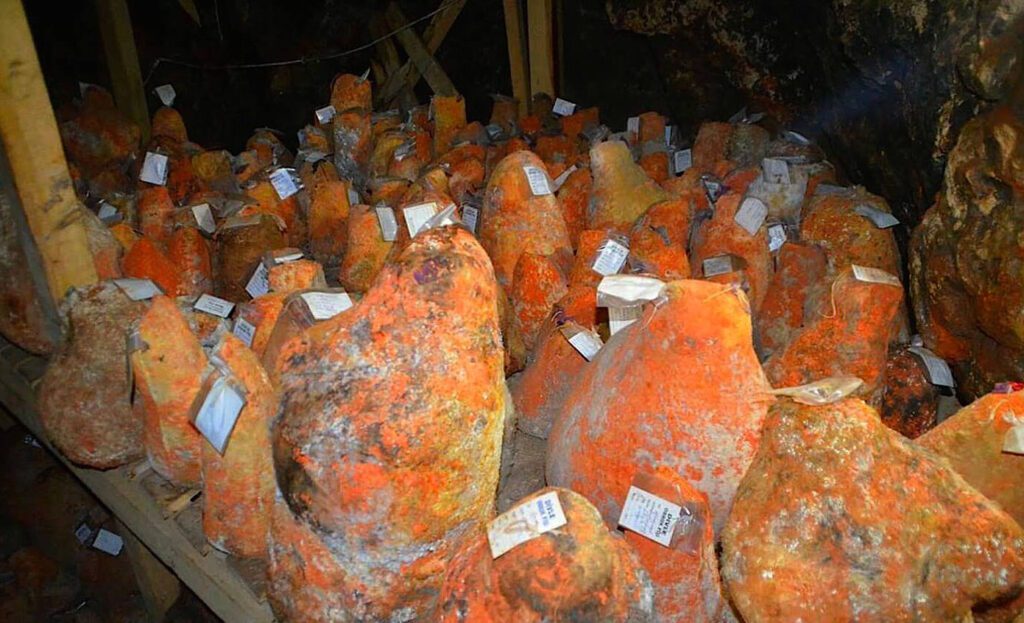
Divle Obruk Cheese, is one of the best quality 5 cheeses in the world with its unique taste and aroma. This delicious cheese is produced from sheep and goat milk, takes its flavour from a fermentation technique in a storage cave for months. Cheese production for Divle Obruk begins in April. Traditionally, milk from purebred Karaman sheep was used, but that breed has since dwindled in the region. These days, both goat and sheep’s milk is used. After the milk is warmed and coagulated with the addition of calf rennet, the resulting cheese is left to rest for several days, then soaked in water to reduce bitterness. It is then washed, pressed under rocks to remove moisture, slathered with salt, and eventually crumbled and packed by hand into clean bags made of sheepskin or goatskin. Some bags can hold as much as 50 pounds. Making the bags themselves takes time. The skins must be washed, salted, and left to air-dry in the harsh Anatolian sun for several days (sometimes up to a year), and they can be used only once.
Mihalıç Cheese from Balıkesir
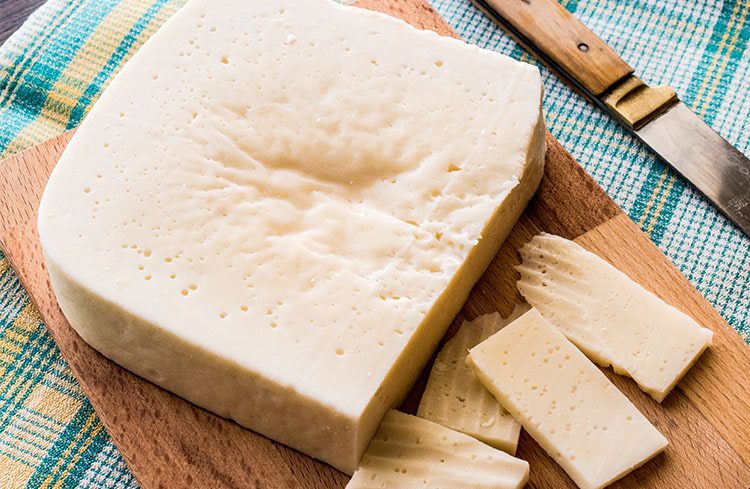
This cheese is an old cheese and originates in the Ottoman Empire. Unlike white cheese, its production really is limited to just a couple areas of the country, with Balıkesir and Bursa being the prime examples. Mihaliç cheese, or Kelle cheese as it’s sometimes known, is perhaps most closely compared with Parmesan cheese as it’s typically made from unpasteurised sheep’s milk and stored in brine before it hardens and dries.
It can also be found to made from either goat’s milk or cow’s milk even though sheep’s milk is technically the most traditional. Due to its strong, salty flavor it’s often used to grate over foods, such as salads or baked dishes in much the same way parmesan is used. But it also makes for a great side dish or meze – as do almost all Turkish cheeses.
Dil Peyniri – Stringy Fresh Milk Cheese
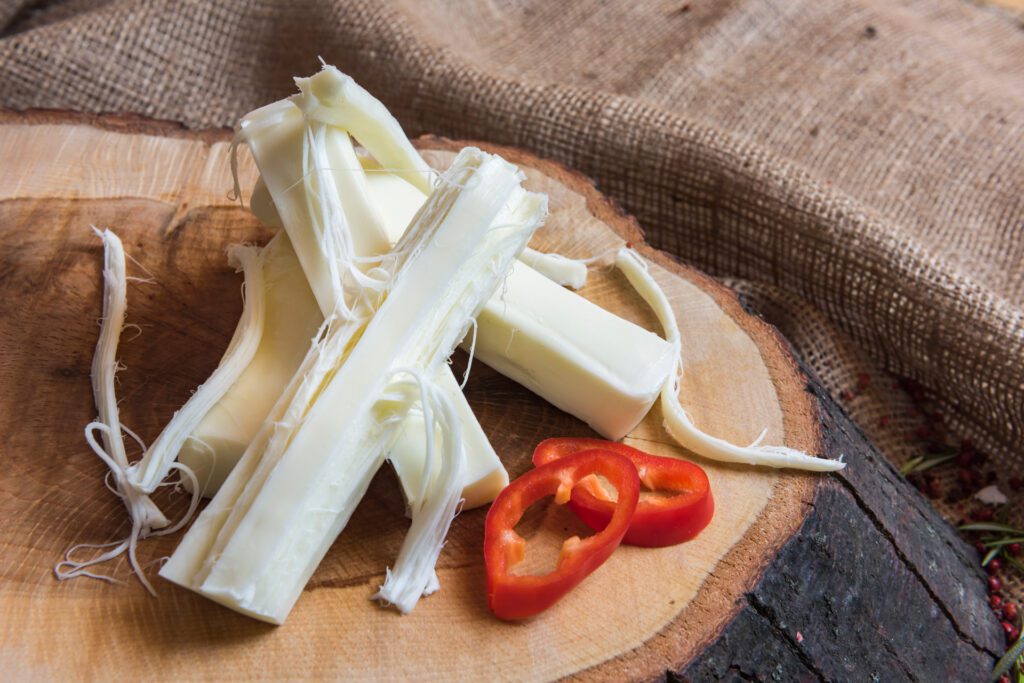
This fresh, white, stringy cheese, called “dil peyniri”, must be eaten within a week. It’s most often sold in rectangular logs and pulled apart in stringy strips or cut in chunks. Like mozzarella cheese, fresh dil is wet and has the best fresh, milky flavor in the first few days after production. Also like mozzarella, dil becomes very stringy when melted. That’s why in Turkey, it’s not the preferred cheese for use on pizza, taking a second seat to fresh kashar cheese. Fresh dil is usually eaten for breakfast. It’s quite popular with children because of its mild flavor.
Lor Cheese from Manyas

Lor is a crumbly, relatively unsalted cheese that goes incredibly well in pastries, though it’s also served during breakfast or can be mixed with spices and herbs and eaten as a meze for dinner.
Because it’s relatively unsalted it’s also used for desserts sometimes, though its crumbly nature makes other cheeses slightly more common. It’s white in color and tastes perhaps similar to ricotta cheese or cottage cheese that’s a little more common outside of Turkey.
Bergama Sheep Tulum Cheese

Tulum cheeses are very common and are some of the creamiest of the Turkish cheeses. They have a high moisture content that melts perfectly into just about any dish and their long shelf-life as well means that Tulum is just about perfect for mixing into any main course. However, as with all cheeses in Turkey, they’re primarily consumed on their own either in breakfast or as a meze over dinner, and Bergama Tulum is no exception. Tulum itself means “sheep’s skin” or simply “skin,” though tulum is often made with a mixture of sheep’s milk and cow’s milk.
Tulum goes perfectly with fresh butter, walnuts and a freshly-baked warm Turkish bread of some sort, perhaps a pide over Ramadan. Tulum from Izmir like Bergama Tulum is kept in salt water, which gives it a stronger consistency and a richer flavor. It’s a mature cheese and is usually left to sit for a minimum of 3 to 6 months, though almost every region of Turkey makes its own variety of tulum and each have their own tasting notes and flavors.
Çökelek Cheese along the Mediterranean

Çökelek cheese is an unsalted and light cheese that made from yoghurt and comes from different parts of Turkey’s Mediterranean region. It’s excellent in pastries and is often seasoned to give in an extra bit of flavor, or if it’s on it’s own it often is served with a drizzle of olive oil. After the cheese is made it’s usually aged for many months to bring out its flavor, making the it rich and creamy, so much so that it is also served with meat dishes. After it’s matured it’s dried out to harden and is truly one of the best cheeses in Turkey.
Kargı Tulum Cheese from Çorum
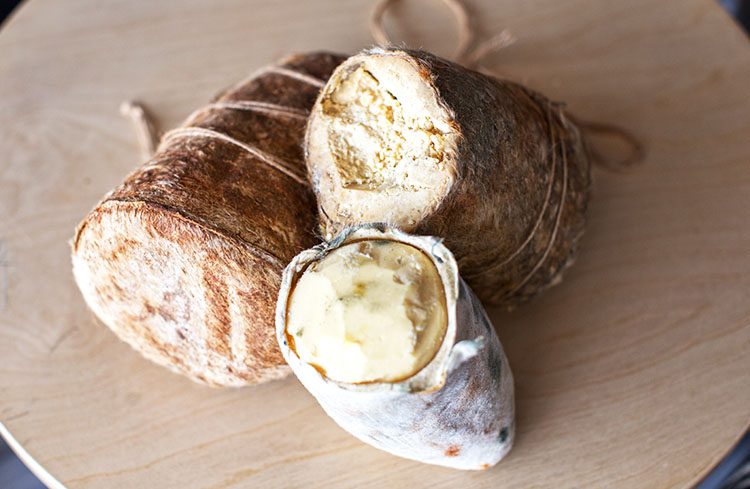
Tulum cheese produced in Kargı in the province of Çorum along the Black Sea is slightly more conventional than Bergama Tulum. It can be made of cow, sheep or goat’s milk (or more often than not a mixture thereof) and is not salted in the way Bergama Tulum is, meaning it’s a little more crumbly and a little sharper. It’s matured and is an excellent accompaniment to a big dinner full of rich flavors. It’s often sold in either a sheepskin or goatskin and has a buttery consistency at times to match its sharp flavor. It’s typically matured for around 6 months and goes wonderfully well with walnuts and freshly baked bread.
Otlu Peynir (Herbed Cheese) from Van

As the name suggests, the cheese isn’t doing all the work with Van herbed cheese. The cheese itself itypically made from either sheep or cow’s milk and are semi-hard with a salty flavor, but the majority of the flavor comes from the incredible amount of herbs that are put in, many of them local and endemic to the Van region of Turkey.
20-25 various herbs are added, including most commonly Allium, Thymus, Silene and Ferula. But each village around Van tends to have their own local herbs that they add (or don’t) and as the cheese itself has grown in popularity, so have the varieties it comes in. Herbs added are often wild, such as wild garlic which gives the cheese a garlicky aroma in many cases.
The Turkish cheese itself developed for medicinal purposes when healing herbs needed to be eaten in large quantities, especially due to the lack of scientific knowledge for which herbs in particular were the most beneficial to health. So the cheese was produced to make a tasty way to consume many different wild herbs known only to local doctors. The herbs are brined before being added to the cheese, thus the cheese’s salty flavor, and the cheese is typically matured around 6 months to bring out the flavor. The final product is a yellowish, semi-hard cheese with a garlicky aroma and a fair scent of fresh thyme as well.
It’s eat as a grated cheese onto omelets or also goes incredibly well in sauces, or simply eaten as a meze appetizer with some bread and butter.
Koleti (Kolot) Cheese from Trabzon

Koleti (Kolot ) cheese is local to the Black Sea region of turkey and is particularly famous for its use in the dish of Mıhlama. Koleti is made from unpasteurized milk and when the milk turns ot cheese it is doused with boiling water and left to cool before being sliced and aged at least 3 months.
Mıhlama is made by mixing cornmeal and either butter or clotted cream with the cheese for an incredibly rich, cheesy dish that’s cooked slowly together so the cheese is stringy and melted and served piping hot.
Cerkez Smoked Cheese (Çerkez İsli Peynir)

Smoked cheese is produced in the areas surrounding Duzce and Hendek in the Marmara region of Turkey. This cheese gets its robust flavor in special smokehouses that burn pine wood. This cheese has a wonderful aroma and rich, smoky flavor. It comes in wheels covered by a light brown, textured hull. Smoked cheese is normally eaten on its own or melted into sauces.
Aged Kaşar Cheese from Kars
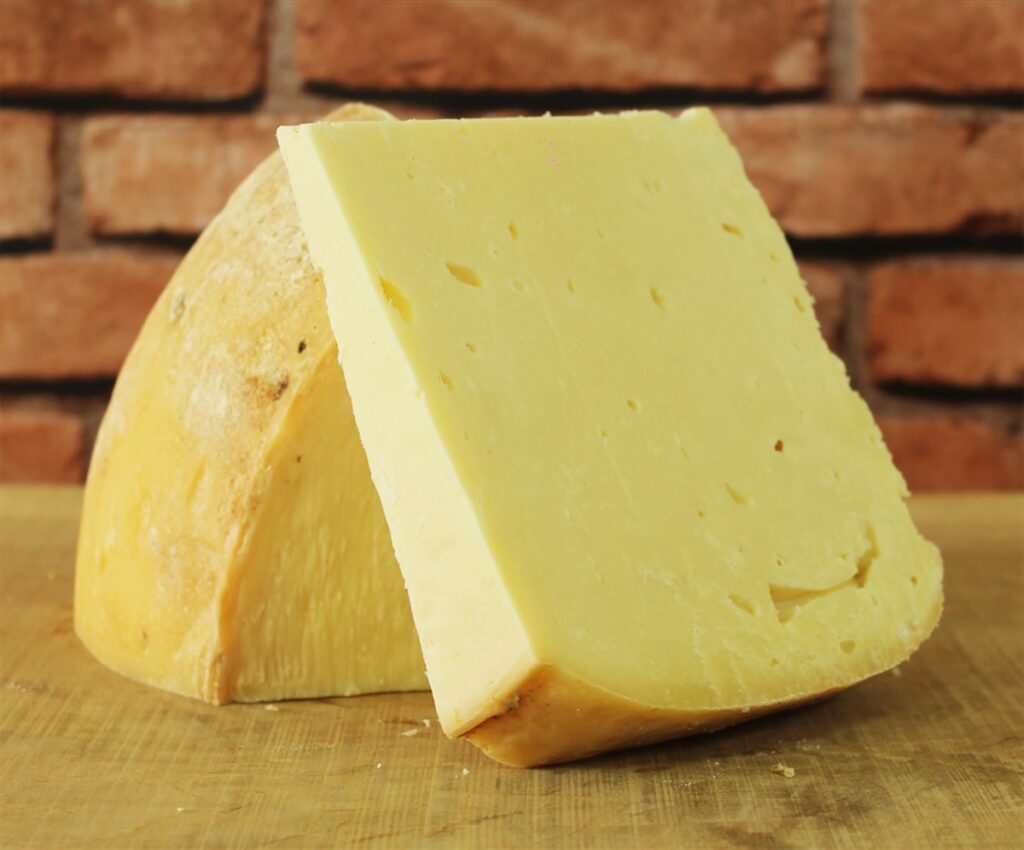
Kaşar cheese, or eski kaşar (literally old kaşar) as the matured version is known, is perhaps the cheese that is most widely used in foods compared with eaten on its own. It has a buttery and tangy flavor that makes it suitable to eat with any meal. When aged over 6 months, as it usually is in the northeastern region of Kars, it develops peppery notes that go incredibly well with just about anything. It can be made from cow, sheep or goat’s milk though cow’s milk is the most common. It often accompanies white cheese with breakfast as a very different flavor.
Before it’s been aged, kaşar cheese is smoother and lighter and is typically made from cow’s milk. It melts very well and is used as the primary melting cheese in Turkish dishes, though it’s excellent for slicing or grating as well. It’s used in pizzas, sandwiches, or most commonly on grilled cheese sandwiches simply called “toast” in Turkish.
Fresh Kaşar Cheese

Another popular cheese common in Turkey and Greece is called “taze kasar”, which means kashar cheese that hasn’t been aged. Fresh kashar is a smooth, firm, light yellow cheese usually made from cow’s milk. It’s a very versatile cheese good for slicing, melting, grating, or eating straight up. It most often accompanies white cheese at breakfast. It’s also used on pizzas, in sandwiches and salads, and as the main ingredient in Turkey’s classic comfort food, “tost.” In English, it’s called a grilled cheese sandwich.
Kars Gravyeri (Gruyere)

Kars Gravyeri is one of the most famous Turkish cheeses in the world with its tang, rich odor, and flavor. This traditional gruyere cheese is usually made with pure cow’s milk or a mixture of cow and goat’s milk. It takes its flavor from the quality milk of animals grazing in high plateaus.
Abaza Cheese (Abaza Peynir)
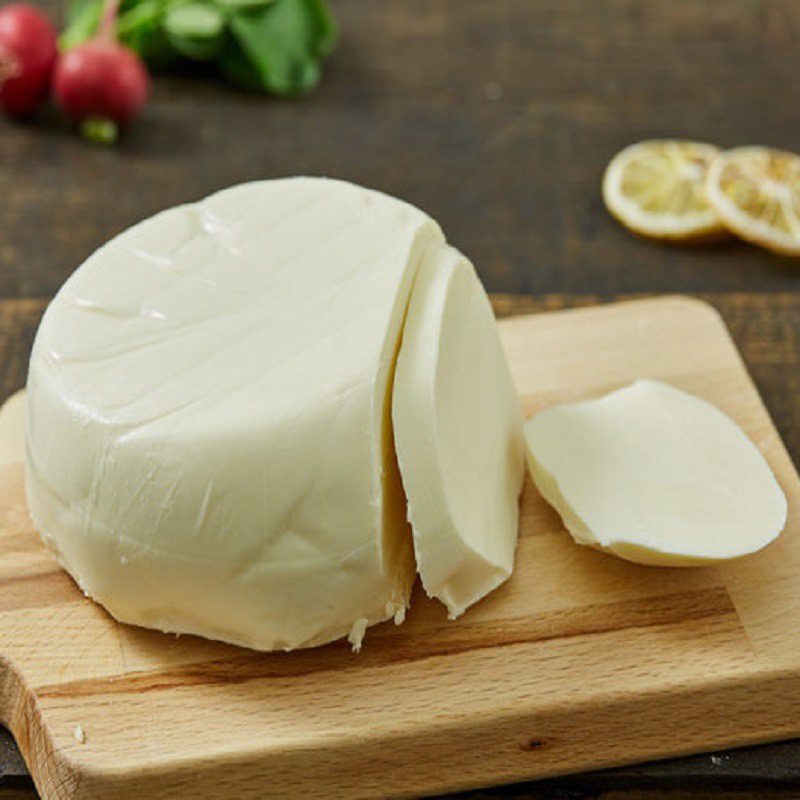
Abaza Cheese is made with goats, sheep and cows’ milk fed with fresh thyme in the unique nature of the plateaus. The history of Abaza cheeses, produced with great care, dates back to hundreds of years. Turkey’s Western Anatolia region (Istanbul, Izmit, Bolu, Düzce in) traditional production methods of Abkhazians living more intensely, creating access to the underlying secret of today’s flavor of the cheese. Every month of the year, cheeses are produced only with milk and yeast by fermenting the milk and boiling the clot and then shaping and throwing it into the brine. Abaza cheese can be consumed for breakfast.
Sepet Peyniri (Basket Cheese)
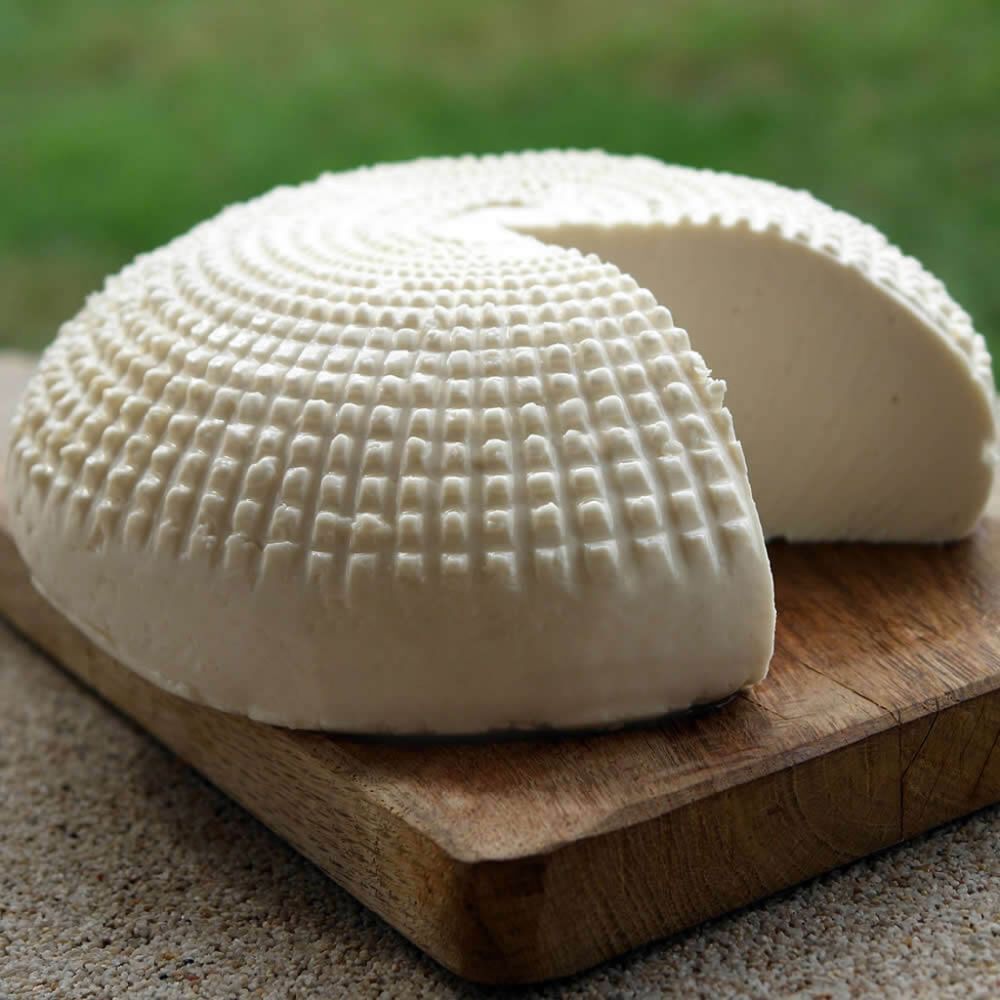
Sepet peyniri is produced in baskets within the Aegean region that lie close to the sea, principally Ayvalik and also Dikili, Burhaniye, Foça, Çesme, Urla, Karaburun, Ödemis
and Söke. Ayvalik, Karaburun and Çesme in particular are renowned for its production. In Ayvalik, the cheese is known as “Kelle Cheese”. The cheese was taught to the local
people by immigrants into the region. The milk from woolly goats, which are still widely raised by shepherds and small herd owners in the area, is used in the production of the
cheese. In Ödemis and Söke, a blend of cow’s and ewe’s milk is used.
Other Local Cheeses
Other than these major varieties, there are many other types of Turkish cheese; Örgü cheese (Southeastern Anatolia) gets its name because it is prepared in braided hair form, and it is suitable for frying. In addition to Dil (Marmara Region), Civil (Eastern Anatolia), Şamur (vicinity of Izmir), Çerkes (Black Sea Region), Sikma (Southeastern Anatolia Region), Carra (vicinity of Hatay), Abaza (Middle Anatolia Region), Yörük (vicinity of Denizli), there are many other types of cheese which get their names from the containers used for maturation; çömlek, küp, çanak, and testi, etc.
- Kirli Hanim produced around Ayvalik features white cheese filtered in reed baskets, salted and left to mature in a cool place, and it appeals to gourmet taste. Künefe Cheese is produced in the vicinity of Hatay, singularly for use with the dessert dish Künefe and semolina sweets. One of the most special varieties of cheese produced in Turkey is Kars Gravyeri, which has holes and needs to be left for maturation for at least ten months before it can be ready for consumption.
- Konya küflü peynir , Although available in every single eatery of its hometown, this ‘green cheese’ only entered Istanbul’s culinary scene recently. Taking its color from added roquefort mold, this aged treat tends to give its bright color to the dishes it is a part of.
- Avanos küp peyniri , This rare delicacy ripens in clay pots buried in basements of Cappadocia’s stone houses, and is neither easy to find nor cheap. Average aging time is two to three years, and might require signing up to a waiting list. Our absolute favorite is made by Hacer Özkaya in Güzelyurt.
- Gorcola Peyniri, This crumbled cheese with a very intense odour is unfortunately only made in traditional households, usually for their private consumption. It is generously mixed and covered with salt, while the skin in which the cheese is aged is buried in damp soil for two to three months.
-
Erdemit’ basket cheese : This is a low salt cheese, moulded in knitted baskets and made usually from a blend of goat, sheep and cow milk.
- Çig Kesik is a raw sheep’s milk cheese made in Samsun that derives its flavor from the mountain thyme the sheep in the region nourish on.
- Koponesti Cheese : Koponesti, peculiar to the towns of Urla, Çesme, Karaburun, and Foça in Izmir, is a Lor Cheese of Greek origin. The cheese, produced in the Greek islands of the Aegean, is most often consumed as an appetizer. This variety of cheese came across from Greek culture at the time of the Balkan war when local people learned how to make it from the Greeks who came to settle in and around Çesme and Karaburun.
- Tire Çamur Cheese: This cheese is produced in and known by the name of the town of Tire in Izmir. It is a rare local cheese suitable for spreading on bread. Essentially, it is obtained by blending together Lor Cheese and brine from mature tinned Tulum Cheese. Although originally made from ewe’s and goat’s milk, nowadays cow’s milk is more often used in its production.
The cheeses which are outside of the main varieties get their particular characteristics from the geographical conditions of the region. In inland regions, where difficult winter conditions prevail, cheese are tend to be saltier and harder. On the other hand, in coastal regions, lighter varieties of cheese are preferred. The diversity of different types is influenced by four main factors: cultural habits and tastes, natural conditions, the species and variety of animals providing the milk, and production methods. This is equally true of Turkey, where scores of local cheeses in every region are now beginning to be discovered, putting the country on the cheese map at last.
Related Readings










